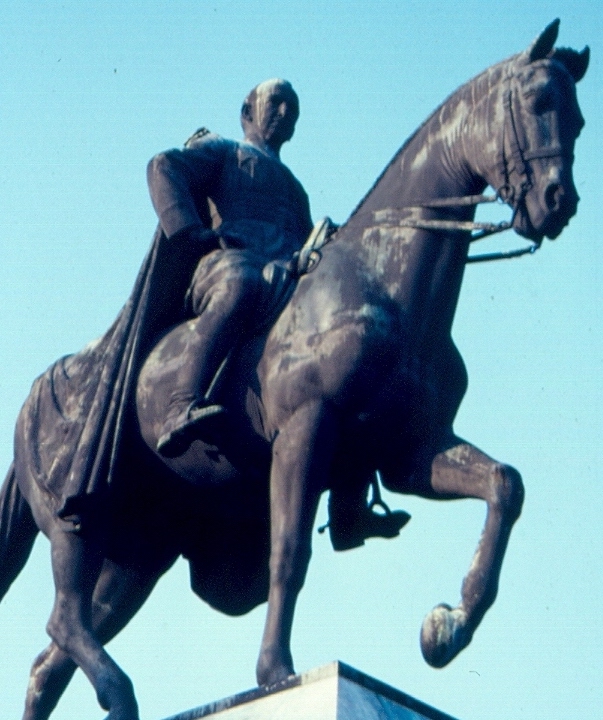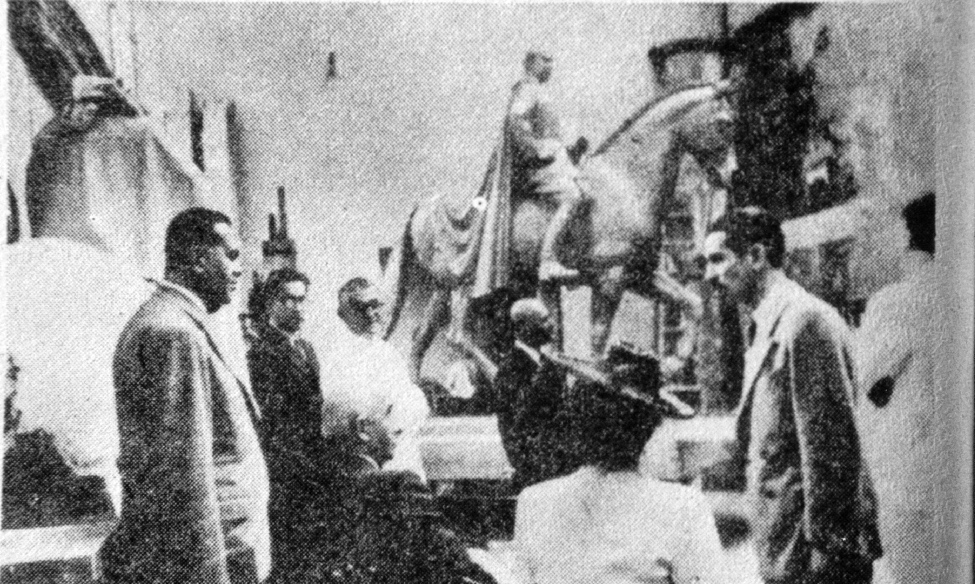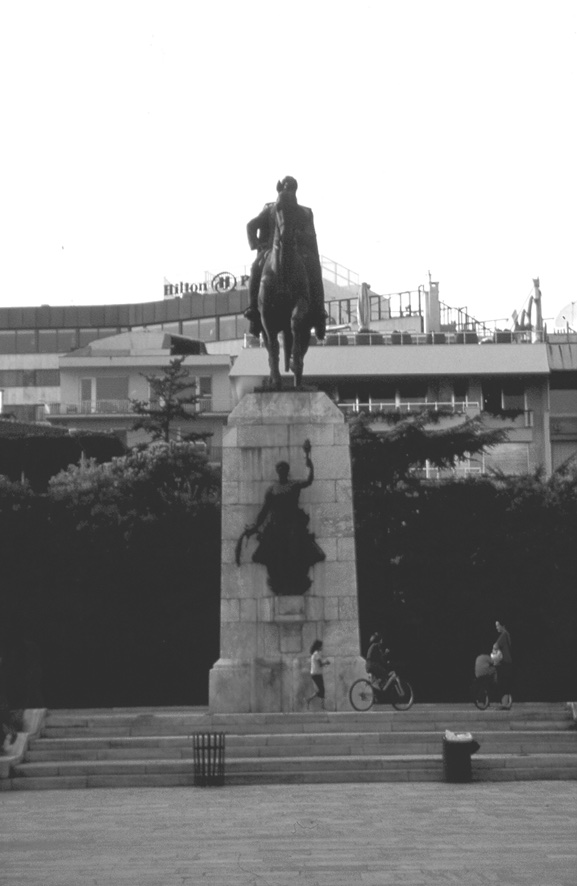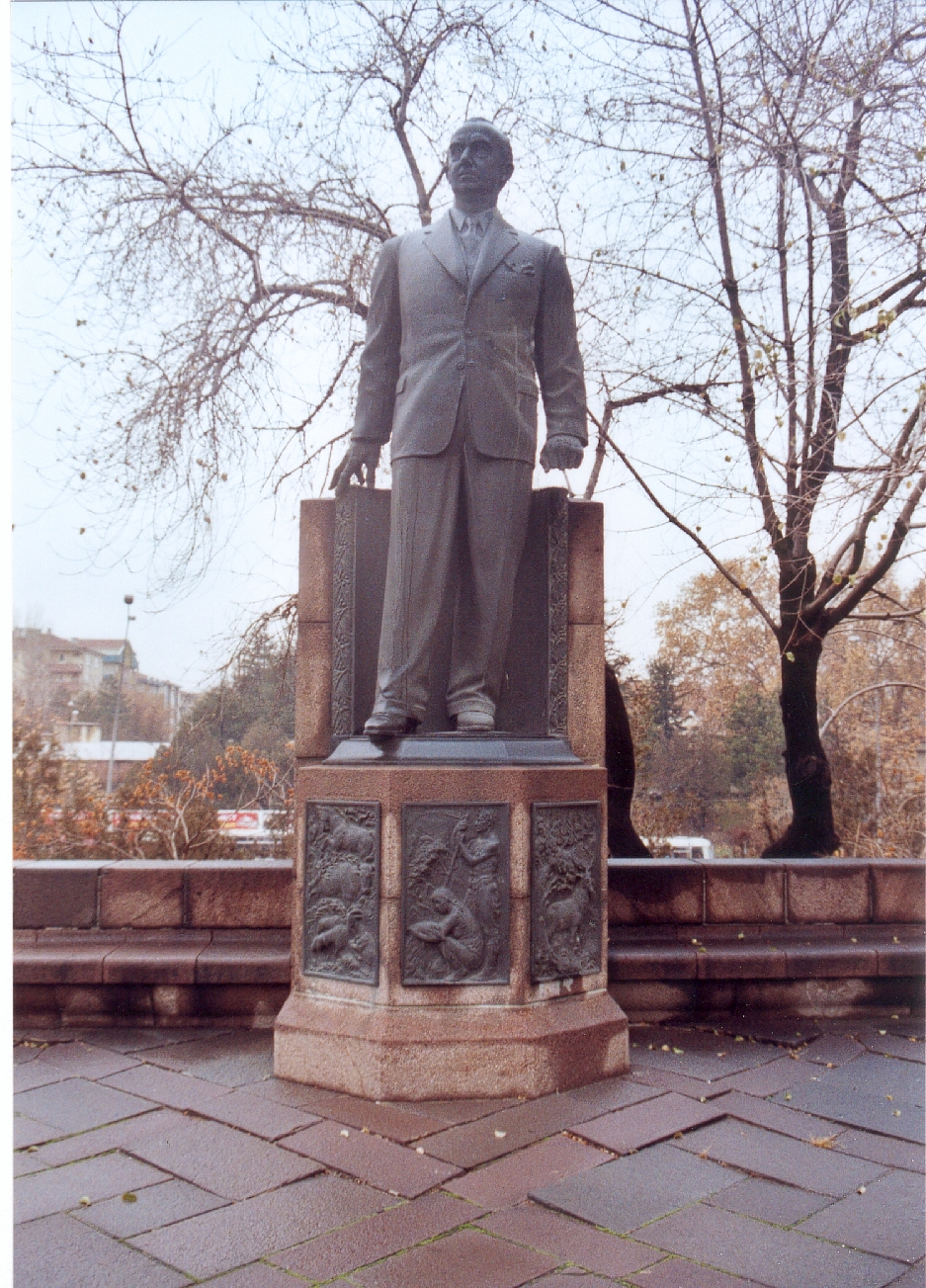Archive
Ismet Inönü Heykeli
- Monument
- Ismet Inönü Heykeli
Word Count: 4
- Monument for Ismet Inönü
- Rudolf Belling
- 1941
- 1944
Ismet Inönü Parkı, Vişnezade, Maçka, Istanbul.
- Istanbul (TR)
Between 1941 and 1944 the Berlin sculptor Rudolf Belling worked on the Ismet Inönü Heykeli. The monument was placed in the neighbourhood of Maçka.
Word Count: 24

Rudolf Belling, Monument for Ismet Inönü, Maçka, Istanbul, 1940–1944, detail (Photo: Burcu Dogramaci, 2002). 
Ismet Inönü, 3rd left, visiting the Academy of Fine Arts Istanbul. Also present: Mayor of Istanbul, Lütfi Kirdar, far left; Ismet Inönü and wife, both seated; Academy director Burhan Toprak, far right. Belling's equestrian statue of Inönü can be seen in the background, 1. August 1942, photographer unknown. (Cezar 1983, 16). 
Rudolf Belling, Monument for Ismet Inönü, Maçka, Istanbul, 1940–1944, front view (Photo: Burcu Dogramaci, 2002). 
Rudolf Belling, Monument for Ismet Inönü, Maçka, Istanbul, 1940–1944 (Photo: Burcu Dogramaci, 2002). 
Rudolf Belling, Monument for Ismet Inönü, Courtyard of the Agricultural Faculty of the University of Ankara, 1943/44 (Photo: Burcu Dogramaci, 2004). 
Rudolf Belling, Moulding for the Istanbul University, entrance to conference room of the Faculty of Natural Sciences, 1946, detail (Photo: Dogramaci, 2002). Berk, Nurullah, and Hüseyin Gezer. 50 yılın Türk Resim ve Heykeli. Iş Bankası Kültür Yayınları, 1973.
Cezar, Mustafa. “Güzel Sanatlar Akademisi’nden 100. Yılda Mimar Sinan Üniversitesi’ne.” Kurumumuz 100 Yaşında, edited by Muhteşem Giray, Mimar Sinan Üniversitesi, 1983, pp. 5–84.
Dogramaci, Burcu. Kulturtransfer und nationale Identität. Deutschsprachige Architekten, Stadtplaner und Bildhauer in der Türkei nach 1927. Gebr. Mann, 2008.
Dogramaci, Burcu. “‘Gegenständlich und naturfern zugleichʼ. Von Denkmälern und freien Formen: Rudolf Belling in Istanbul und München.” Rudolf Belling: Skulpturen und Architekturen, edited by Dieter Scholz and Christina Thomson, exh. cat. Nationalgalerie, Staatliche Museen zu Berlin, Berlin, 2017, pp. 286–303.
Nerdinger, Winfried. Rudolf Belling und die Kunstströmungen in Berlin 1918–1923. Mit einem Katalog der plastischen Werke. Deutscher Verlag für Kunstwissenschaft, 1981.
Rittlinger, Herbert. Geheimdienst mit beschränkter Haftung. Bericht vom Bosporus. Deutsche Verlags-Anstalt, 1973.
Word Count: 139
Rudolf-Belling-Archiv, Krailling.
Word Count: 2
My deep gratitude goes to Elisabeth Weber-Belling, who constantly supported my research.
Word Count: 12
- Istanbul
- Burcu Dogramaci. "Ismet Inönü Heykeli." METROMOD Archive, 2021, https://archive.metromod.net/viewer.p/69/2949/object/5140-10991014, last modified: 18-09-2021.
-
Rudolf BellingSculptorIstanbul
As a professor at the Academy of Fine Arts and Technical University in Istanbul from 1937 until 1966, Rudolf Belling taught his students the technicalities of form, material and proportion.
Word Count: 28
Nikolai KalmykoffPainterScene DesignerMuralistIstanbulKalmykoff played an active part in the Union of Russian Painters in Constantinople and at the same time worked as a stage designer. Later he acquired the Turkish citizenship.
Word Count: 29
Union of Russian Painters in ConstantinopleAssociationIstanbulThe Union existed for less than two years but in that short space of time a tremendous amount of work was done by its members, refugees from the Russian Empire.
Word Count: 30
Exhibition of Russian émigré artists at Taksim Military BarracksExhibitionIstanbulThe exhibition of Russian-speaking émigré artists at Taksim Military Barracks was the first major exhibition organised by the Union of Russian Painters in Constantinople.
Word Count: 24